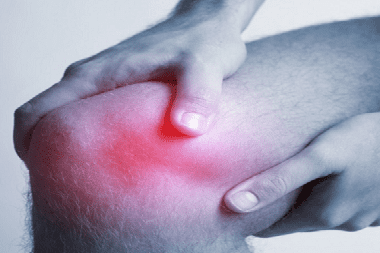Musculoskeletal system >>>> Joint bursitis - what is it?
Joint bursitis - what is it?

Inflammation of the bursa of infectious and non-infectious origin is called "bursitis". The bursa envelops all structures of the joint and is filled with synovial fluid that softens friction in the articular joints.
The causes of bursitis are associated with joint injuries, penetrating wounds (punctures, abrasions, blows with tissue rupture) with subsequent infection or superficial but chronic injuries that develop as a result of constant overload of the joint by excessive force effects (sports, weight lifting, unsuccessful rotation in the joint).
As a rule, a nonspecific infection, conditionally pathogenic microflora that lives on the surface of the skin, penetrates into the synovial bag. But from foci, an infection in the body through the lymph flow and blood flow, specific infectious agents can also enter the synovial bag. Sometimes bursitis proceeds as phlegmon, since pyogenic bacteria enter a closed confined space, and create a large accumulation of purulent contents.
Signs of bursitis:
- redness and swelling in the joint area,
- when palpating the articular bag, its increase in size is observed due to inflammatory exudate, palpation is observed softness, a rounded formation,
- Unlike arthritis of the joint
- there is a pain symptom in the area of the affected joint,
- the temperature rises, which, with the development of a purulent process, can reach more than 39 degrees.
Diagnosis of bursitis is carried out on the basis of a patient survey, visual examination and palpation of the joint. X-ray and ultrasound are performed to clarify the diagnosis.
Treatment for bursitis differs depending on whether the injury was penetrating or superficial. Puncture of the synovial fluid allows you to clarify the microflora and choose antibiotic therapy. If necessary, the outflow of purulent contents of the synovial bag is drained. The drains also help flush the inside of the synovial bursa directly with antiseptics and proteolytic enzymes that help speed up healing. With inflammation of the bursa of a non-purulent nature, anti-inflammatory and analgesic drugs are prescribed, rest and provision of unloading of the joint. In the absence of an acute inflammatory process, physiotherapy and therapeutic exercises are prescribed to prevent the development of contracture.
Complicated purulent bursitis may require surgical intervention for the purpose of excision of the bursa.

Read

Read



























